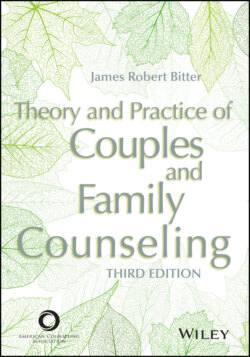Читать книгу Theory and Practice of Couples and Family Counseling - James Robert Bitter - Страница 91
Ethics Codes and Standards of Professional Practice
ОглавлениеAs everyone who has ever read their profession’s ethics codes soon learns, these codes primarily provide guidance, rather than absolute directives, for professional activity. Almost every couples and family counselor has wished, at one time or another, to find a clear and concise answer to an ethical dilemma carefully defined in the profession’s codes of ethics. Having such a definition would make clinical life so much easier. Ethical dilemmas would surface, and answers would be found in some section of a code of ethics; furthermore, a concrete requirement for action would be immediately clear. And, once in a while, we actually can find clear directives in our standards of practice: Do not have sex with your clients, do not let clients harm themselves or others, and provide informed consent are a few examples. Most ethical dilemmas, however, are much more difficult to understand and resolve.
Those who have chosen to work in the helping professions, in particular with families, find themselves working with what Susan Johnson (2015) called the multilayered complex drama of distressed relationships. Ill-defined problems occur when human beings frame a given experience as a problem. Conducting a family counseling session with a family that has a member who serves as your mechanic is simply an experience that has to be addressed. Most, if not all, helping professions would frame this experience as a potential problem because of the dual or multiple relationships involved. Jensen (2005) defined a dual relationship as
a separate and distinct relationship that occurs between the therapist and a patient, or a patient’s spouse, partner, or family member, either simultaneously with the therapeutic relationship, or during a reasonable period of time following the termination of the therapeutic relationship. (p. 17)
In this example, there is the customer–mechanic relationship, the family counselor–client relationship, the family counselor–other family member relationship, and the family member–family member relationship.
Let us see what help various codes of ethics may provide. The ACA Code of Ethics (American Counseling Association [ACA], 2014) encourages counselors to avoid nonprofessional relationships when “the interaction is potentially harmful to the client” (Standard A.6.e.). Similarly, the IAMFC Code of Ethics (International Association of Marriage and Family Counselors [IAMFC], 2017) encourages family counselors to “avoid multiple relationships with clients, including but not limited to, business, social, or educational relationships” (p. 2). The AAMFT Code of Ethics (American Association for Marriage and Family Therapy [AAMFT], 2015) requires that therapists
make every effort to avoid conditions and multiple relationships with clients that could impair professional judgment or increase the risk of exploitation. Such relationships include, but are not limited to, business or close personal relationships with a client or the client’s immediate family. When the risk of impairment or exploitation exists due to conditions or multiple roles, therapists document the appropriate precautions taken. (Principle 1.3)
So now what? Let us say you are a family counselor and a member of both IAMFC and ACA. IAMFC strongly asserts that family counselors should avoid business relationships, whereas ACA’s code would allow such a relationship if it were not harmful and maybe even beneficial to the client. To which code are you bound: the one for a division of ACA that represents your counseling specialty or the one for the entire counseling profession? Another difficult question is how you would determine what might be a harmful or beneficial relationship. That is apparently not so easy to answer.
AAMFT (2015) lists two highly problematic concerns that could result from dual relationships: impaired professional judgment and client exploitation. Okay, so that is easy. If I think that a dual relationship with my mechanic could impair my professional judgment or result in exploitation, I just do not take that person or family on as a client: That is nice and clear. But what if I do not live in a big city? What if I live in a small town in a rural state or up in the northern territories of Canada? What if I am the only therapist for miles around? How can I avoid dual relationships then? Well, if I cannot, I am directed to take appropriate precautions. I wonder what those are.
If it all comes down to my professional judgment, what will motivate my actions: a duty to respectfully follow perhaps multiple codes of ethics; a desire to avoid legal problems; or a desire to do what I think is best, based on my personal virtue, morality, and character? Welcome to the world of ethics in family practice.
We began this chapter by noting that professional ethics provide not only guidance but also opportunity for personal learning and growth. Ethical decision-making—especially when dealing with conflicting professional ethics codes—moves you into the realm of ambiguity and uncertainty. It becomes the practitioner’s responsibility, hopefully with consultation from experienced professionals, to make clinical choices that promote the well-being of clients. So what do “beneficial” or “promote” or “well-being” really mean in action? How are these terms defined? Who has a role in defining them? Even though these are difficult questions to address, some of your most meaningful moments as a family practitioner may occur in the uncertain struggles with professional ethics.
Any consideration of professional ethics is fuzzy, and the phrase “It depends” will emerge more often than a definitive answer. A dilemma is a dilemma because it is not easily solved, and wrestling with it often raises more questions than it answers.
